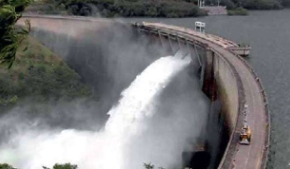
Sri Lanka's electricity generation is facing significant challenges due to the effects of the current dry season. The country's electricity board, the Ceylon Electricity Board (CEB), reported that hydropower generation has been severely impacted, with 21 hydropower plants operating at reduced capacities. Currently, these plants have a combined capacity of 1441.7 MW, but their output has dropped to 20% of the normal level, down from 60% during rainy seasons. This decline is attributed to the scarcity of water for irrigation and downstream use, which are prioritized over hydropower generation.
The CEB also highlighted that solar energy, which normally contributes more than 80% of electricity during these months, has become a cheaper and more reliable alternative to hydropower. However, the lack of water for other essential uses has particularly affected hydropower's contribution to the national grid.
To address this, the Sri Lankan government has announced a plan to develop a 600 MW Pumped Storage Hydropower (PSH) project. This initiative aims to capture excess renewable energy from solar and wind sources and store it for use during peak demand periods. The project, located in the Aranayake and Nawalapitiya regions, will use two reservoirs connected by a 2.5 km tunnel to form a large-scale energy storage system. This will help stabilize the electricity grid and support Sri Lanka's goal of achieving 70% of its electricity from renewables by 2030. By integrating pumped storage hydropower with solar and wind energy, Sri Lanka aims to balance its renewable energy supply and enhance grid resilience.
The proposed project is part of a broader strategy to diversify Sri Lanka's energy portfolio and reduce reliance on imported electricity. The government's focus on renewable energy and grid stability is a key component of its energy transition agenda, which also includes promoting electric vehicle charging stations and expanding solar power infrastructure.
In summary, Sri Lanka's electricity challenges are primarily driven by the effects of the current dry season, which are directly impacting hydropower generation. The proposed PSH project offers a promising solution to balance renewable energy supply and grid stability, aligning with the country's long-term sustainability goals.